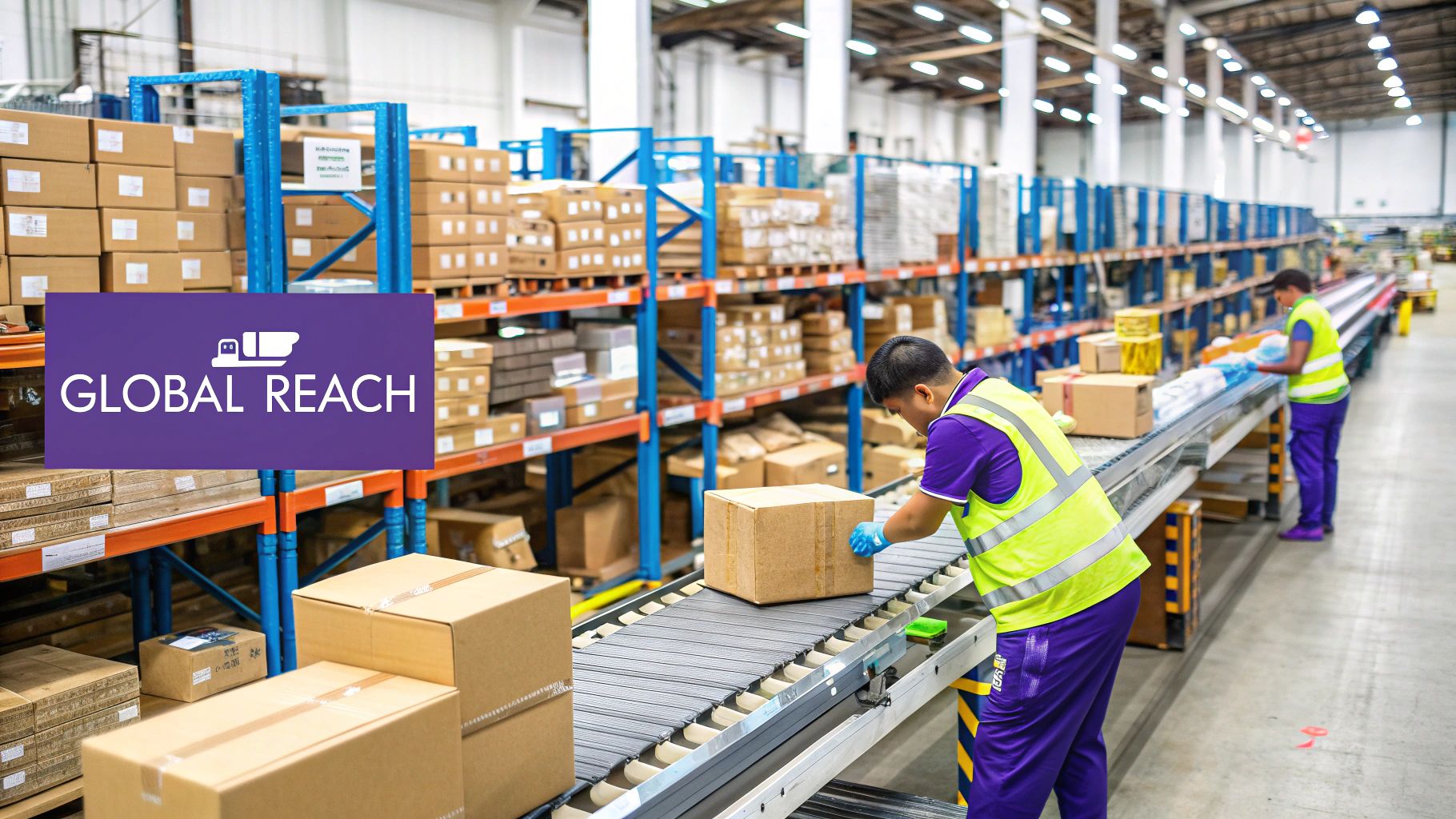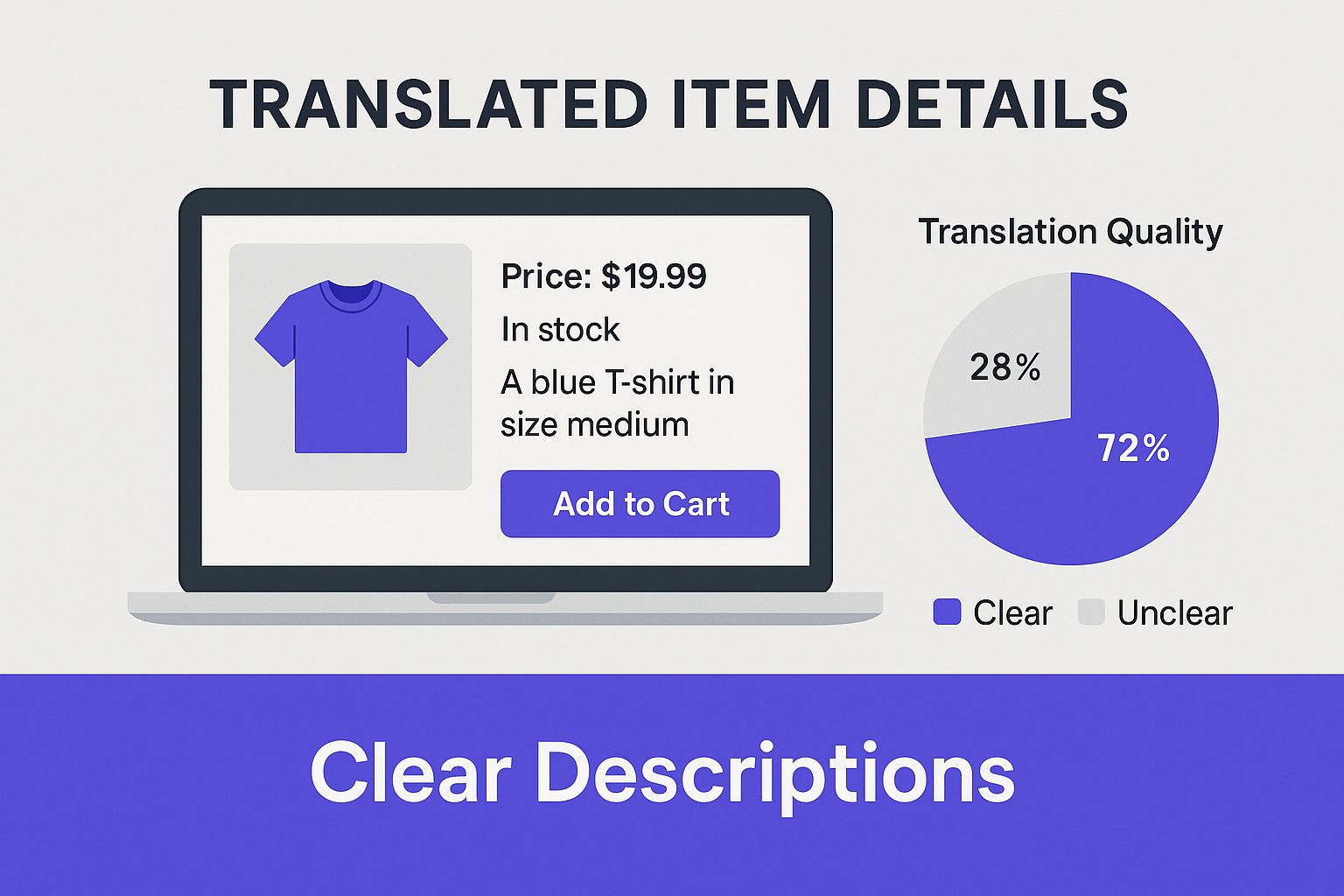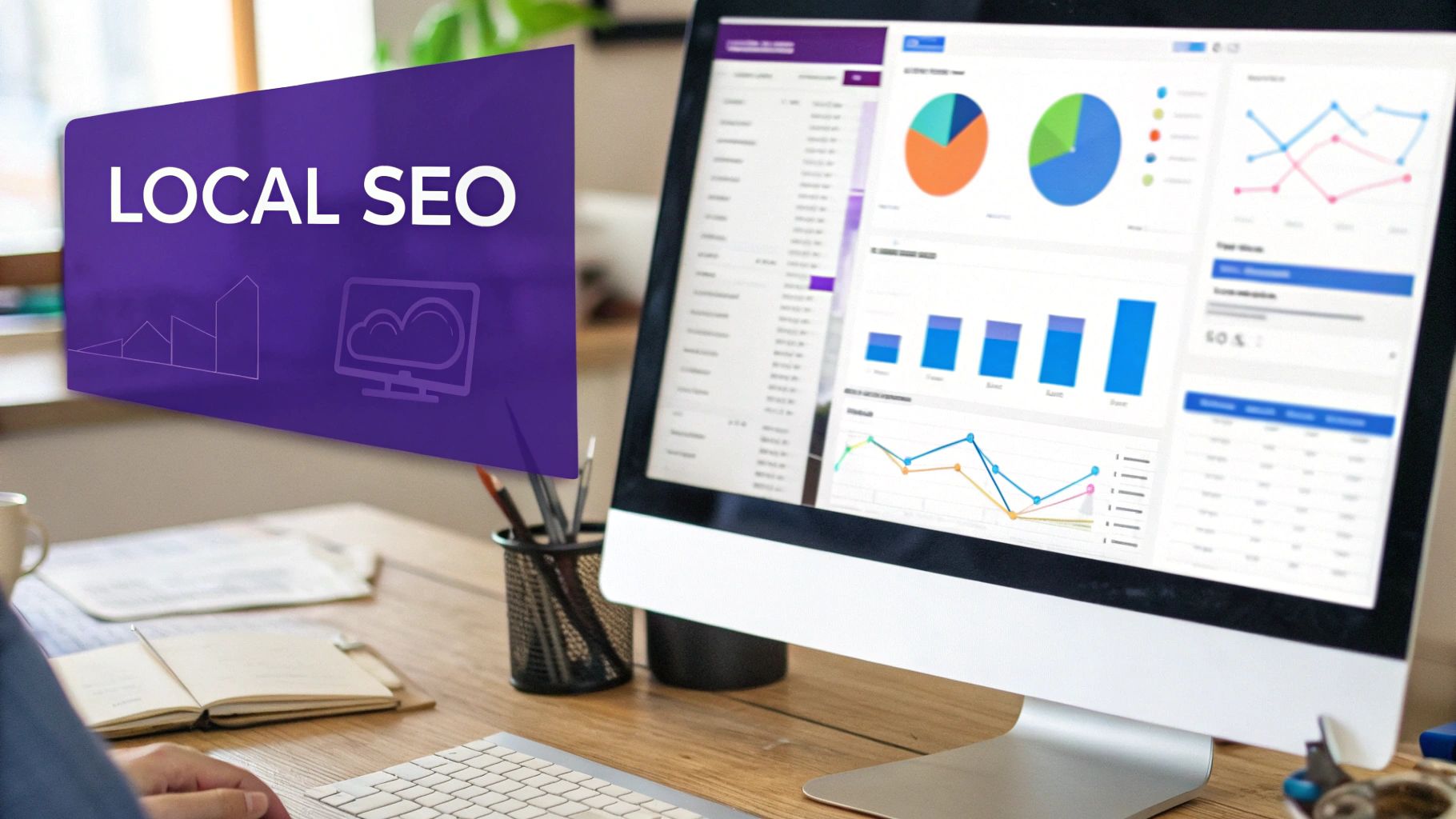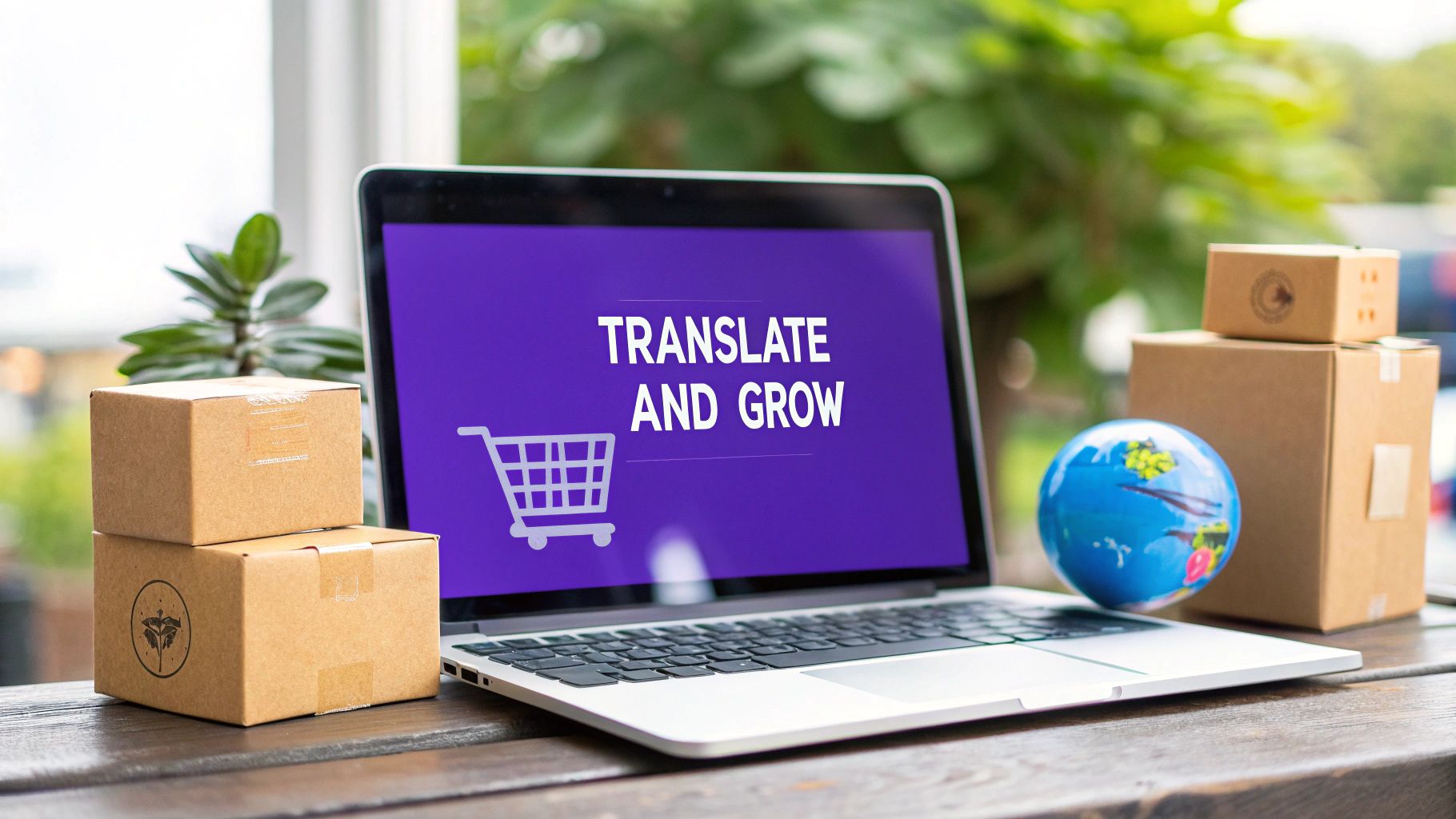Why Smart Businesses Invest In Translation (And See Real Results)
Smart ecommerce businesses know that speaking their customers' language is essential for growth. It's not just good customer service; it directly impacts the bottom line. Imagine a potential customer landing on your website, intrigued by a product, but completely unable to understand the description. The sale is likely lost. A translated website, on the other hand, instantly builds trust and encourages purchases.

The Impact on Your Bottom Line
Investing in translation can transform your business. It's not just about single transactions; it's about cultivating lasting customer relationships. This means understanding the cultural nuances of your target market and adapting your message accordingly. Think of it like offering different flavors of ice cream to appeal to a wider range of tastes. Translating your website offers a "flavor" of your brand that resonates with each specific audience, building loyalty and driving repeat business.
Measurable Metrics That Matter
How can you track the success of your translation efforts? Look for conversion rate improvements and increased customer lifetime value. These are key metrics that offer concrete data. Expanding into new markets is another important consideration. Removing the language barrier unlocks opportunities to reach a wider customer base, potentially increasing revenue and market share.
Ecommerce localization, especially website translation, has a profound impact on business growth and competitiveness. The global cross-border ecommerce market is expected to reach $5.9 trillion by 2029. However, 84% of ecommerce businesses face intense competition. Studies show that companies that invest in comprehensive localization, targeting multiple markets, experience significantly higher growth rates — more than double — compared to those with minimal localization. This clearly demonstrates the importance of website translation for business expansion. For more detailed statistics, check out this resource: Learn more about ecommerce localization.
Beyond Basic Translation: Building Relationships
Translation is more than just words; it's about connecting with your customers on a global scale. Investing in high-quality ecommerce website translation demonstrates a commitment to understanding and serving your international audience. This builds trust, strengthens relationships, and ultimately fuels sustainable business growth.
Finding Your Sweet Spot In The Global Market
Expanding into new markets can feel exhilarating, but choosing the right territory is essential for success with ecommerce website translation. It's not about pursuing the largest markets, but about discovering the sweet spot where your products connect with an underserved linguistic audience. This strategic approach requires thorough market analysis, an understanding of diverse consumer behavior, and an eye for emerging opportunities.
Identifying Untapped Potential
Many businesses gravitate towards obvious choices, often overlooking smaller linguistic markets with substantial potential. For example, a company selling handcrafted goods might encounter less competition and a more receptive audience in a region that values artisanal products, even if that market isn't as large as more common targets. When expanding globally, it's important to consider which languages you'll need to support. Supported languages can be a valuable resource during your expansion planning.
Additionally, understanding the nuances of consumer behavior is vital. What resonates with one culture may not connect with another. A product marketed towards a younger demographic in one country could find success with an older audience in a different linguistic region. Understanding these cultural differences is key to selecting the appropriate markets for your products. For further insight into ecommerce integration, check out this resource: How to master ecommerce platform integration.
Prioritizing Profitable Languages
Understanding market dynamics is key to maximizing your ROI. The global translation industry, fueled by globalization and digital communication, reached approximately $75 billion in 2025, experiencing nearly 6% annual growth since 2019. While English still represents 49% of all websites, its share has been declining. This shift indicates growth in other languages like Spanish, German, and French, presenting opportunities for businesses targeting those linguistic groups. Interestingly, while almost 20% of internet users speak Chinese, only 1% of online content is available in Chinese, suggesting a large untapped market. Explore this topic further for more detailed statistics.
A Strategic Framework for Market Selection
Prioritizing the right markets requires a clear understanding of your products, budget, and growth objectives. Begin by analyzing market demand for your offerings in various linguistic regions. Next, evaluate the existing competition in those markets to identify opportunities with minimal saturation. Finally, consider the translation and localization costs for each target language to ensure they align with your budget. This framework will facilitate informed decisions and optimize your ecommerce website translation strategy for maximum impact.
Picking The Right Translation Strategy Without Breaking The Bank
Choosing the right translation strategy for your ecommerce website is essential for international success. A poor approach can hinder global expansion and waste valuable resources. This section explores the advantages and disadvantages of different translation methods, ranging from human translation to AI-powered solutions, helping you find the perfect balance between quality and cost-effectiveness.
Weighing Your Options: Human vs. Machine Translation
Human translation, while offering superior quality and nuance, can be a significant investment. It's the best choice for content requiring cultural sensitivity and creativity, such as marketing materials or compelling brand storytelling. Machine translation, powered by AI, is considerably faster and more budget-friendly, making it suitable for large volumes of text like product descriptions or FAQs. However, machine translation may sometimes lack the nuanced understanding of language and culture that a human translator provides.
Hybrid Approach: The Best of Both Worlds
Many successful ecommerce businesses opt for a hybrid approach, strategically combining human and machine translation. For instance, they might use machine translation for a first pass on product descriptions and then have human translators review and polish the output, ensuring accuracy and cultural relevance. This strategy provides a cost-effective way to maintain high quality across a large website. For related insights on building relationships in new markets, check out this article: How to master customer retention.
Visualizing Clarity: The Importance of Clear Product Descriptions
The following infographic illustrates the significant impact of clear product descriptions on ecommerce website translation:

As the infographic highlights, a translated product page with clear descriptions is crucial for converting international customers. Providing this clarity in multiple languages fosters trust and encourages informed purchase decisions.
Scaling Your Translation Efforts
As your business expands, so will your translation needs. Starting small, perhaps focusing on key pages like product descriptions and the checkout process, allows you to test and refine your strategy. You can then expand to other website areas as needed. Partnering with a reputable translation agency or using a robust translation management system can streamline the process and ensure consistency as you scale.
To help you choose the best method for your business, let’s compare different translation approaches:
The following table summarizes the key differences between these translation methods:
| Translation Method | Cost Level | Quality Score | Speed | Best For | Scalability |
|---|---|---|---|---|---|
| Machine Translation | Low | Moderate | High | Large volumes of simple text | High |
| Human Translation | High | Excellent | Moderate | Marketing materials, culturally sensitive content | Moderate |
| Hybrid Translation | Medium | High | Moderate | Balancing cost and quality | High |
This table clearly demonstrates the trade-offs between cost, quality, and speed for each translation approach. Consider these factors carefully in light of your specific needs and budget.
Red Flags to Watch Out For
When selecting translation partners, be cautious of extremely low prices or unrealistic turnaround times, which can often indicate poor quality. Look for partners with a proven track record in ecommerce and a thorough understanding of your target markets. Clear communication and a well-defined workflow are vital for a successful partnership. By carefully considering your options and making informed decisions, you can develop a translation strategy that supports your international growth without overspending.
Building Real Customer Connections Across Languages
Ecommerce website translation is more than just swapping words; it's about building authentic relationships with customers globally. It's about ensuring they feel understood and appreciated, regardless of their native language. This directly impacts customer trust, brand perception, and ultimately, repeat business.
A simple analogy illustrates this point: imagine traveling to a country where you don't speak the language. Everyday tasks become challenging, and feelings of isolation and frustration can quickly arise. Conversely, picture finding a shop where the owner speaks your language, understands your needs, and makes you feel welcome. That's the power of effective ecommerce website translation. It creates a positive customer experience by bridging communication gaps.
Beyond Words: Cultural Nuances and Brand Voice
Professional ecommerce website translation delves deeper than direct word-for-word substitutions. It considers the cultural context of the target market. Humor and idioms, for instance, can be easily misinterpreted or even offensive in different cultures. Maintaining a consistent brand voice while respecting these nuances is crucial for building solid customer relationships.
For course creators and educators running their business on Shopify, this is especially crucial. With Tevello, you can deliver your courses and community experiences in multiple languages directly inside your Shopify store. Whether you're teaching design techniques or coaching entrepreneurs, Tevello helps you create localized, culturally resonant learning environments that build real trust with your audience. By 2025, three-quarters of internet users are projected to be multilingual. This highlights the importance of ecommerce website translation for customer engagement and trust.
Research suggests that consumers are more inclined to engage with and stay loyal to brands offering content in their preferred language. Find more detailed statistics here.
The Four Pillars of Exceptional Translation
Truly exceptional translation relies on a combination of four core elements:
- Cultural Adaptation: Tailoring your message to resonate with your target audience's specific values and customs.
- Tone Consistency: Preserving your brand's distinct personality and voice across all translated content.
- Technical Accuracy: Guaranteeing precise translation of essential details like product information and technical specifications.
- Emotional Resonance: Forging an emotional connection with customers, fostering feelings of understanding and appreciation.
Investing in Long-Term Loyalty
High-quality ecommerce website translation represents an investment in lasting customer relationships. By crafting authentic and culturally relevant experiences, you cultivate trust and rapport with international customers. This fosters increased engagement, repeat purchases, and positive word-of-mouth referrals, all vital for sustainable growth. The result? A stronger brand presence and a significant competitive edge in the global market.
Getting The Technical Stuff Right (Without Losing Your Mind)

Translating your ecommerce website can feel overwhelming. But a structured approach to the technical side can make the process much smoother. This involves thinking about your platform, how you handle dynamic content, and how to keep your SEO strong in different languages. This section will guide you through these key areas with practical advice and examples.
Choosing The Right Platform Setup
Your ecommerce platform is the foundation of your multilingual site. Choosing a platform with built-in multilingual support or seamless integration with translation plugins like those available for Shopify can simplify the translation process. This streamlined approach can save you valuable time and resources.
Some platforms offer dedicated apps and integrations designed for multilingual stores. These tools simplify workflows and make it easier to enter new markets. Picking the right platform from the start is a smart move.
Handling Dynamic Content: A Step-by-Step Guide
Dynamic content, like user reviews or personalized recommendations, adds another layer of complexity to website translation. But don't worry, you can manage this effectively.
- Identify all dynamic content: Make a list of all the site elements that update frequently.
- Choose the right translation method: For user-generated content, consider machine translation combined with human review to ensure quality.
- Implement a robust workflow: Set up clear processes for regularly updating and translating dynamic content to maintain consistency and accuracy.
Maintaining SEO Across Languages: International SEO Best Practices
Simply translating your content isn't enough. You also need to optimize it for search engines in each target language. This requires following international SEO best practices.
- Hreflang tags: These tags help search engines understand the language of each page, avoiding duplicate content issues and boosting search visibility.
- Translated keywords: Don't just translate your current keywords. Do keyword research for each target market to find relevant local terms.
- Localized content: Adjust your content, including meta descriptions and title tags, to resonate with the cultural nuances of your target audience. This improves relevance and user engagement.
Following these practices helps ensure your translated content ranks well and reaches your target customers, ultimately leading to stronger customer relationships. For more insights, check out this article on ecommerce customer retention.
Troubleshooting Common Technical Issues
You might encounter a few technical bumps along the way. Here's a quick troubleshooting guide:
| Issue | Solution |
|---|---|
| Broken links | Regularly check for broken links on translated pages and fix them promptly. |
| Encoding issues | Make sure your website uses UTF-8 encoding for all characters and symbols. |
| Formatting problems | Test your translated pages on different browsers and devices to catch and fix any layout inconsistencies. |
Addressing these technical aspects proactively creates a smooth, user-friendly experience for international customers. This builds trust, strengthens your global brand, and ultimately drives conversions and business growth.
Tracking What Actually Matters For Translation Success
Many businesses focus on surface-level metrics when evaluating the success of their translated ecommerce websites. Instead of looking at vanity metrics, they should be focusing on the key performance indicators (KPIs) that truly drive growth. This section explores the essential metrics successful multilingual ecommerce businesses use and how to interpret the data to optimize your translation strategy.
Beyond Vanity Metrics: Focusing on What Drives Growth
Website traffic from various countries offers a glimpse into your global reach, but it doesn't provide a complete picture of your success. Focus on actionable data. For instance, track conversion rates for each language to understand how well your translated content resonates with customers and encourages them to make a purchase. Analyzing customer acquisition costs (CAC) across different languages can also help you determine which markets are the most cost-effective to target.
Analyzing engagement patterns, like bounce rates and time spent on each page, for every translated version of your website is crucial. This helps identify areas where users might struggle with understanding the content or navigating the website effectively. Finally, understand revenue attribution across languages. This will reveal which translated versions generate the most revenue, informing future investment decisions. For more on mapping the customer journey, check out this helpful resource: How to master ecommerce customer journey mapping.
Using Data to Drive Your Translation Strategy
Tracking the right metrics is essential for making informed decisions. Tools like Google Analytics allow you to monitor traffic, conversion rates, and user behavior across different language versions of your website. Implementing language-specific conversion tracking allows you to see which translations are performing best and identify areas for improvement.
Here's a table outlining key metrics to monitor for a successful multilingual ecommerce strategy:
Key Performance Metrics for Multilingual Ecommerce Essential KPIs to track the success of your ecommerce website translation efforts
| Metric | Description | Target Range | Tracking Method | Optimization Tips |
|---|---|---|---|---|
| Conversion Rate | Percentage of visitors who complete a desired action (e.g., purchase). | 2-5% (industry average) | Google Analytics, Ecommerce Tracking | A/B test different translations of calls to action. |
| Customer Acquisition Cost | Cost of acquiring a new customer. | Varies by industry/market | Marketing platform data | Optimize ad campaigns and targeting for each language. |
| Bounce Rate | Percentage of visitors who leave a page without interacting. | <40% is generally good | Google Analytics | Improve website usability and content relevance. |
| Average Time on Page | Average duration visitors spend on a page. | Varies by page/content | Google Analytics | Ensure engaging and easy-to-understand content. |
| Revenue Attribution by Language | Percentage of total revenue generated from each language version of the website. | Track and compare across languages | Ecommerce platform, Analytics | Invest in high-performing languages, optimize underperforming ones. |
This table summarizes important KPIs, their descriptions, target ranges, tracking methods, and optimization tips for improving your translation strategy. By tracking these metrics, you can identify your strengths and weaknesses and understand where to best allocate your translation budget.
Learning From the Best
Leading brands constantly analyze performance data across different languages. They look for areas to improve their translation and localization efforts. This data-driven, iterative approach allows for efficient resource allocation, maximizing international growth. By consistently analyzing your performance and making data-driven adjustments, you can ensure your ecommerce website translation strategy aligns with your overall business goals and contributes to sustainable international growth.
Building A Translation Strategy That Grows With Your Business
The world of ecommerce website translation is constantly evolving. Strategies that worked perfectly yesterday might be outdated tomorrow. This means businesses need a flexible, adaptable translation strategy that can respond to new technologies, shifting customer expectations, and emerging global markets. Let's explore how businesses are building these dynamic frameworks for international success.
Adapting to the Evolving Landscape
Your translation strategy should be a living document, constantly evolving alongside your business. This means remaining open to new technologies and translation methods. For instance, AI-powered translation through platforms like Google Translate can be cost-effective for large volumes of content, while human translation remains essential for marketing materials and nuanced brand messaging. Striking the right balance is crucial.
Customer expectations are also changing. Today's consumers expect seamless experiences, regardless of language or location. This demands a careful approach to website translation, ensuring consistent brand voice and messaging across all languages.
Building a Flexible Framework
A flexible framework allows you to scale your translation efforts as your business expands. Here are some key considerations:
- Prioritizing Key Markets: Focus your initial translation efforts on the languages of your most promising target markets.
- Choosing the Right Tools: Select translation management systems and tools that integrate seamlessly with your ecommerce platform.
- Establishing Clear Workflows: Define clear processes for content updates, translation, and quality assurance. This ensures consistency and efficiency.
The Human Touch: Maintaining Authenticity
While technology is important, the human element remains crucial. Customers appreciate authenticity. This means ensuring your translated content resonates with the cultural nuances of your target audience. A one-size-fits-all approach simply won't work. Adapt your message to the unique cultural context of each market.
Positioning for Long-Term Success
A flexible and adaptable approach to ecommerce website translation positions businesses for long-term international growth. Stay informed about emerging trends, explore new technologies, and prioritize customer experience across all languages. This proactive strategy not only expands your global reach but also cultivates strong relationships with international customers.
Ready To Take Your Courses Global?
With Tevello, seamlessly translate and deliver your content to a worldwide audience, all within your Shopify store. Explore Tevello today. This platform empowers you to offer digital courses and products without redirecting customers to a separate site, streamlining operations, and supporting multilingual functionality for a truly global reach.




